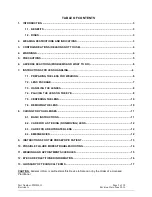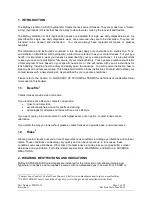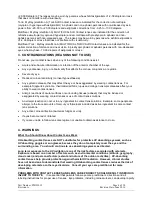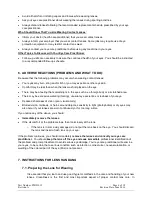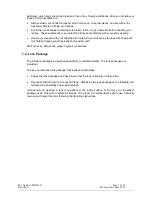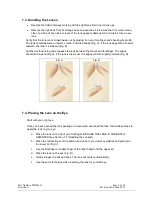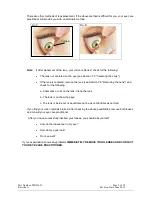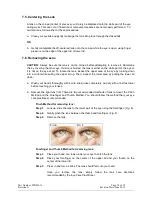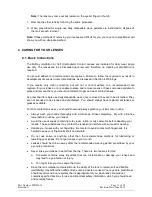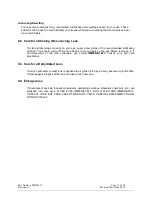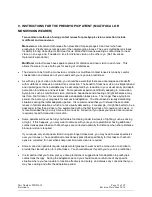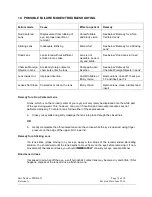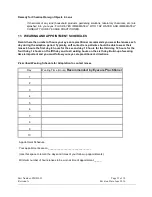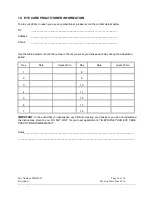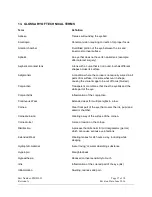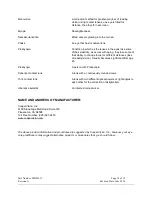
Part Number: PIB01012
Page 11 of 18
Revision A
Revision Date: June 2016
Note:
The lens may come out but remain on the eyelid, finger or thumb.
c. Remove the other lens by following the same procedure.
d. When prescribed for single use daily disposable wear, patients are instructed to dispose of
the lens at each removal.
Note:
If these methods of removing your lenses are difficult for you, your eye care practitioner will
show you with an alternate method.
8.
CARING FOR YOUR LENSES
8.1. Basic Instructions
The MyDay (stenfilcon A) Soft (Hydrophilic) Contact Lenses are indicated for daily wear single
use only. The lenses are to be discarded upon removal; therefore, no cleaning or disinfection is
required.
You should adhere to recommended care regimen. Failure to follow the regimen may result in
development of serious ocular complications, as discussed in Section 4 Warnings.
If you require only vision correction, but will not or cannot adhere to a recommended care
regimen for your lenses, or are unable to place and remove lenses or have someone available to
place and remove them, you should not attempt to get and wear contact lenses.
As prescribed for single use daily disposable wear, once removed, they are to be discarded. They
are not intended to be cleaned and disinfected. You should always have replacement lenses or
glasses available.
For safe contact lens wear, you should know and always practice your lens care routine:
•
Always wash your hands thoroughly with a mild soap. Rinse completely. Dry with a lint-free
towel before touching your lenses.
•
Avoid the use of soaps containing cold cream, lotion, or oily cosmetics before handling your
lenses. These substances may contact the lenses and interfere with successful wearing.
•
Handle your lenses with your fingertips. Be careful to avoid contact with fingernails. It is
helpful to keep your fingernails short and smooth.
•
Do not use saliva or anything other than the recommended solutions for lubricating or
rewetting your lenses. Do not put lenses in your mouth.
•
Lenses should be thrown away after the recommended wearing period prescribed by your
eye care practitioner.
•
Never rinse your lenses in water from the tap. There are two reasons for this:
a. Tap water contains many impurities that can contaminate or damage your lenses and
may lead to eye infection or injury.
b. You might lose your lens down the drain.
•
Since the lens material contains silicone, the ability of the lens to remain soft and flexible
(wettability) may differ when different lens care products are used. Your eye care practitioner
should recommend a care system that is appropriate for you. Each lens care product
contains specific directions for use and important safety information, which you should read
and carefully follow.


